Wooden stands, suiban, doban
In ancient time, stones were displayed on brocade tissue, on cushions or in vessels filled with sand. Nowadays there are mainly two different ways to secure stones in their position:
- the placement on wooden stands, called daiza in Japan
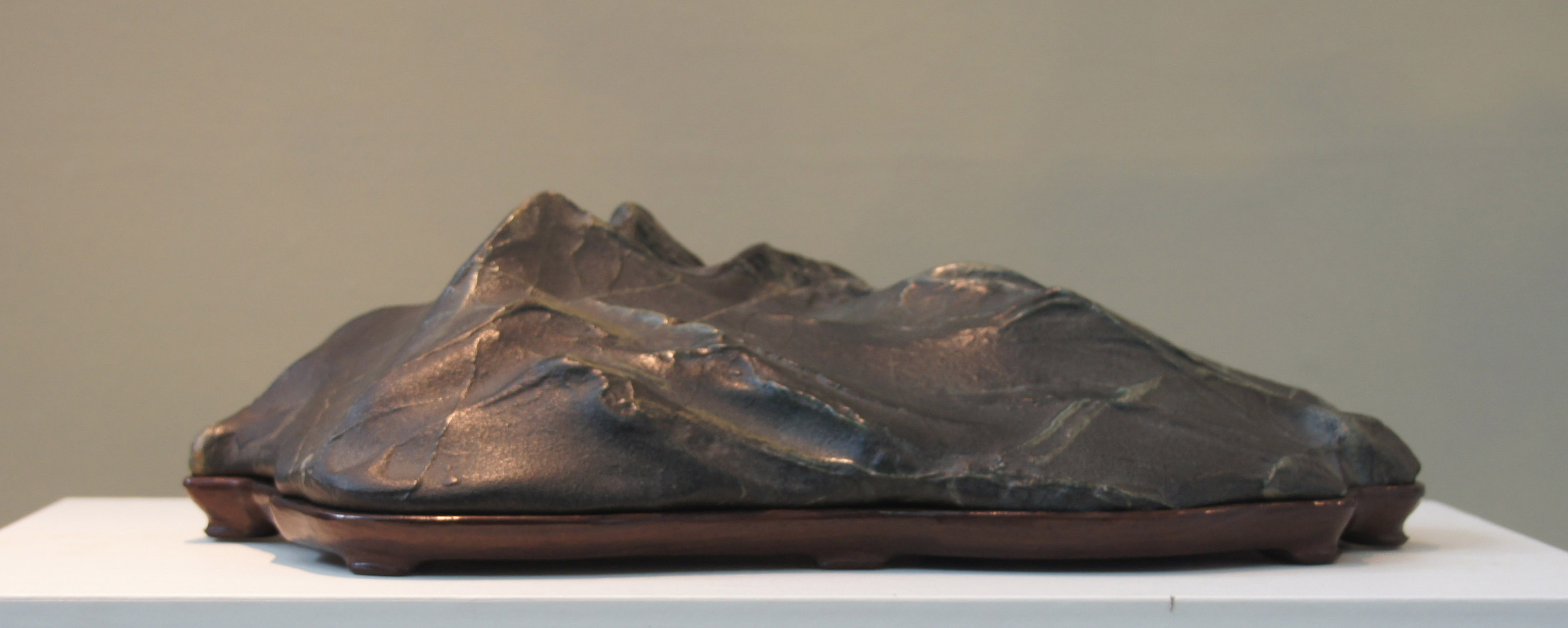
Suiseki with restrained “simple” wooden stand (daiza)
- the positioning in a suiban, a flat rectangular or oval ceramic tray, or a doban, a metallic tray or vessel, mainly of bronze.
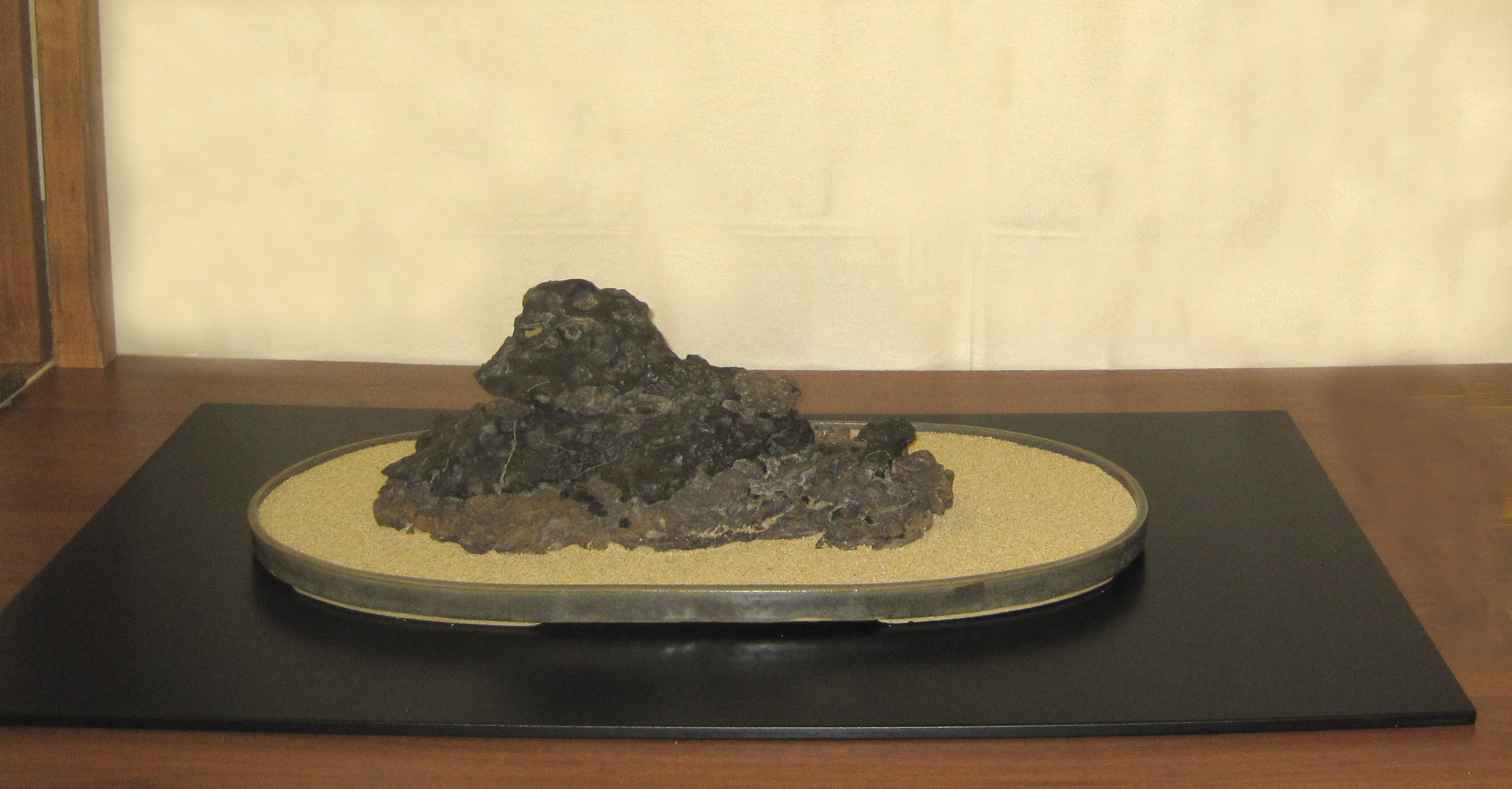
Island stone in a suiban. Normally, the suiban should be about twice the size of the stone. AIAS exhibition in Cesano Maderno, Italy 2017
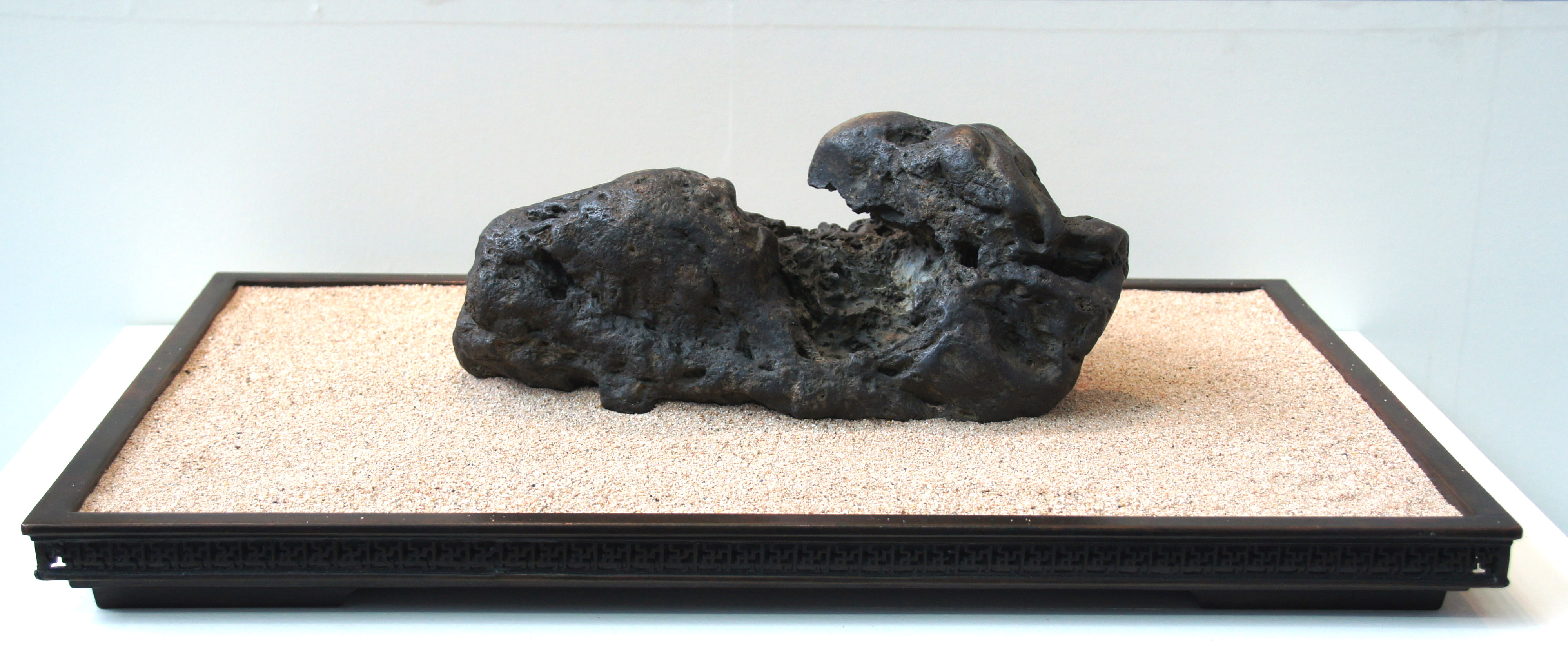
Ibigawa ishi in a rectangular doban at the NSA Suiseki exhibition on occasion of the 8th WBFF convention in Saitama, Japan in 2017
There is a remarkable contrast between China and Japan regarding the preferred positioning of a stone. Whereas in China the vertical alignment predominates, in Japan most suiseki are aligned horizontally. The stand should underline the value respectively beauty of a stone. They are made of “noble” wood and artistically crafted. The design concept of wooden stands differs also between Chinas and Japan. Japanese daiza are custom made, restrained respectively plain fitting exactly the stone on the base so they don’t overpower the stone which should be predominant for the observer. In general, Chinese wooden stands are more elaborate, partly lavishly carved. Only excellent wood is used for excellent stones: Redwood, Chickenwing wood, Ebony, different kinds of Rose wood as well as Zitan wood. There are three different styles in China which give no exact indication of the geographic origin or location but simply denote a stylistic preference:
- the northern style: horizontally oriented, resembling Japanese daiza
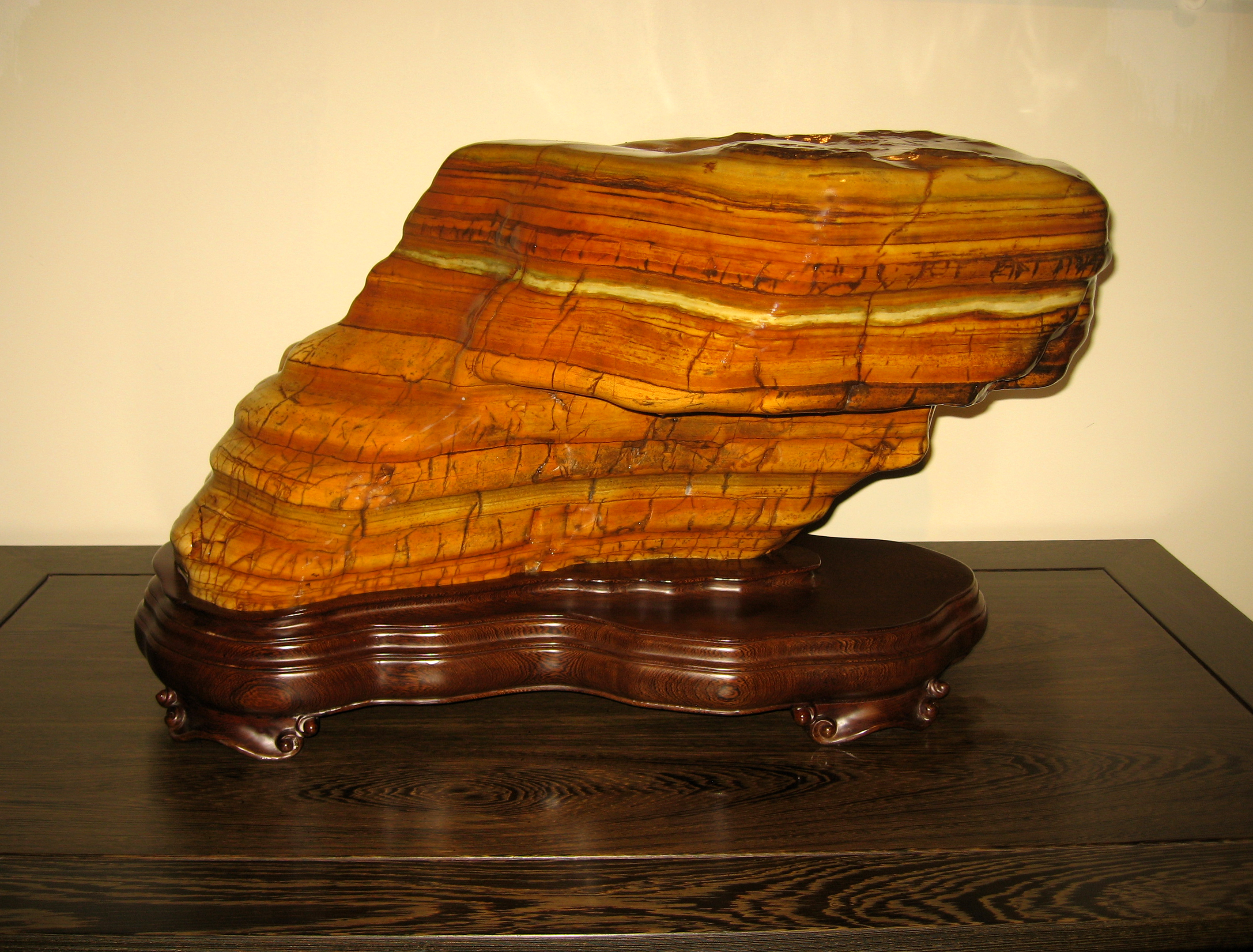
Dahua stone on a wooden stand of northern style, exhibited in Guangzhou in 2015
- Jiangnan or Suzhou style
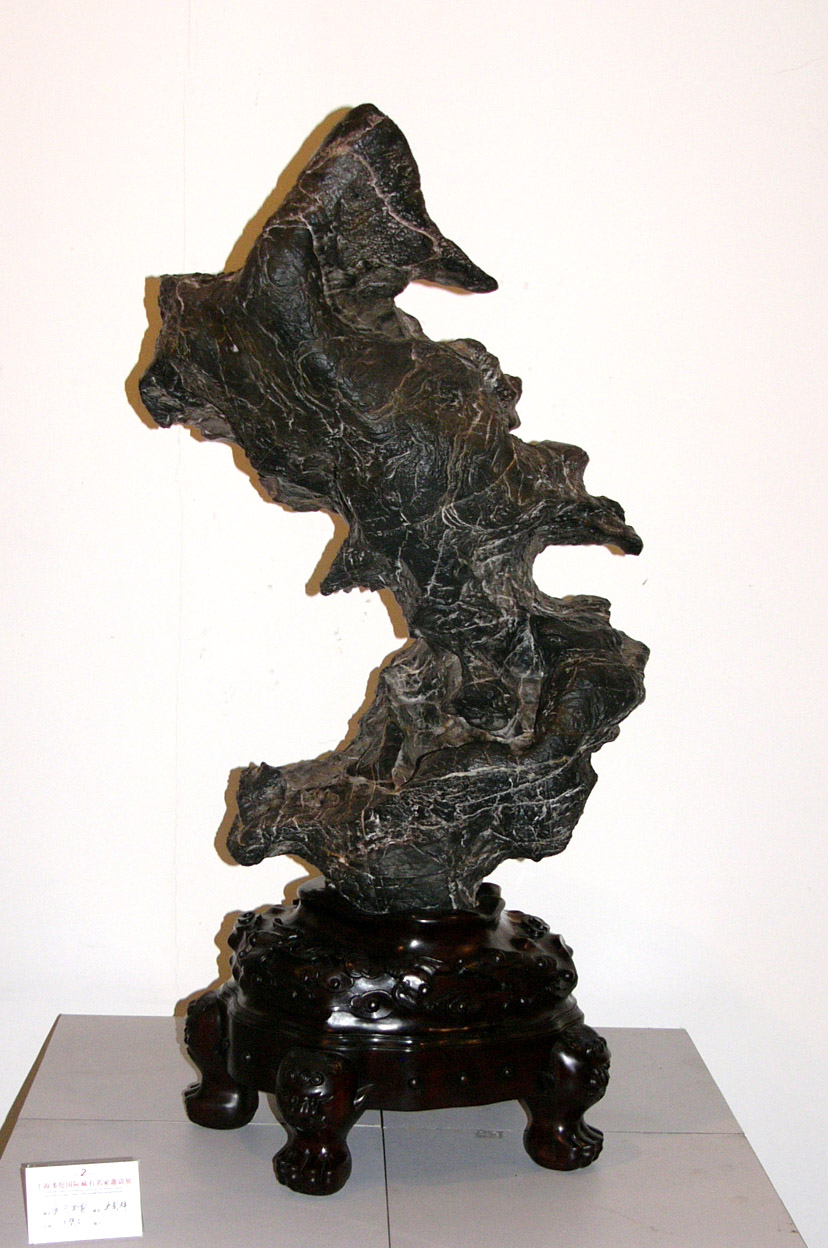
Lingbi stone on a wooden stand of Jiangnan or Suzhou style, exhibited in Shanghai 2006
There are two different kinds: firstly relatively high stands with added curved leggs (see Chinese Scholars’ rocks) and symbolic carvings of cloud-like or Lingshi mushroom motifs.
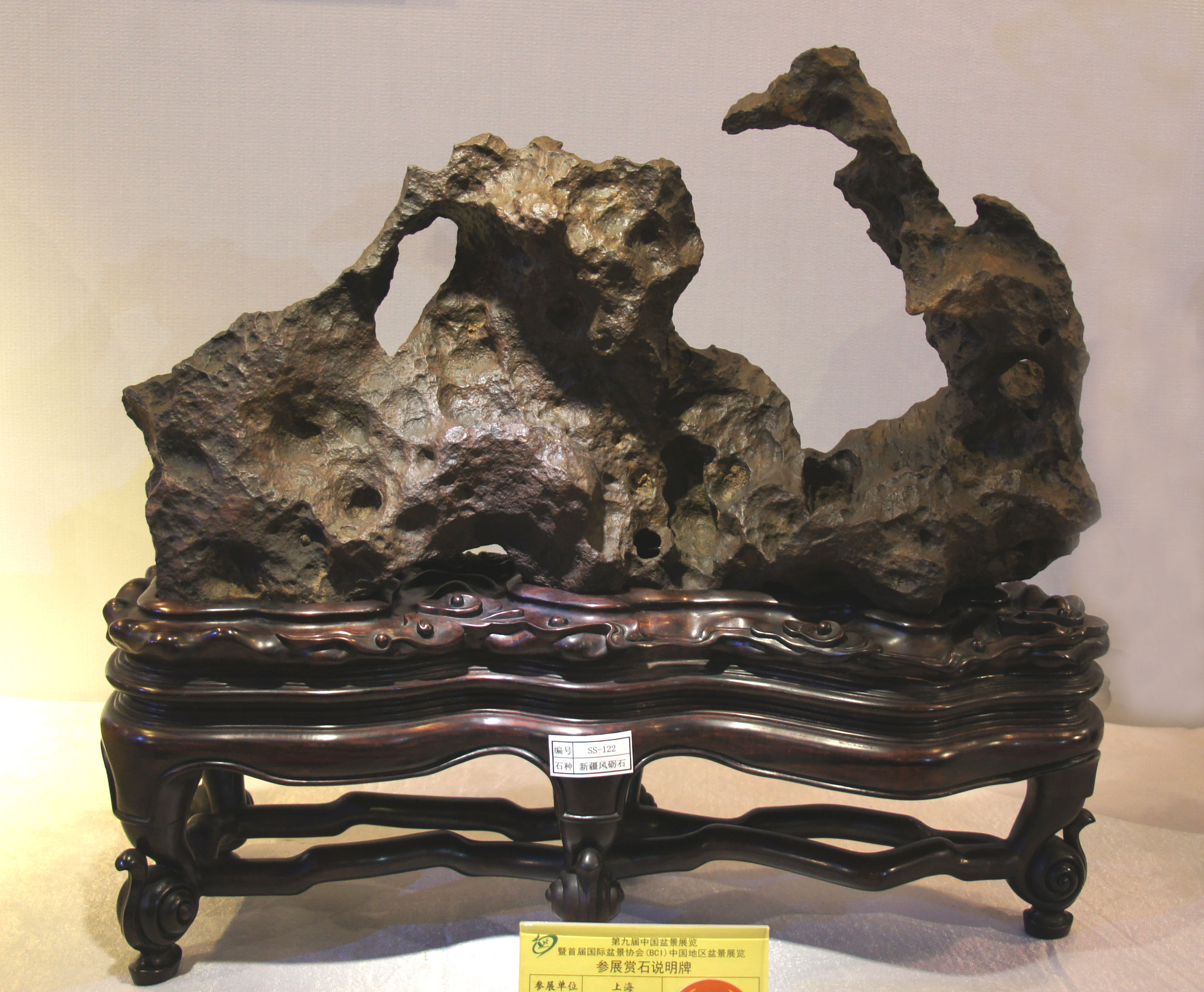
Ying stone on a table-like wooden stand of Jiangnan style, exhibited in Guangzhou in 2015
Secondly table-like stands with indentations on the surface to take the stone and hold it in position.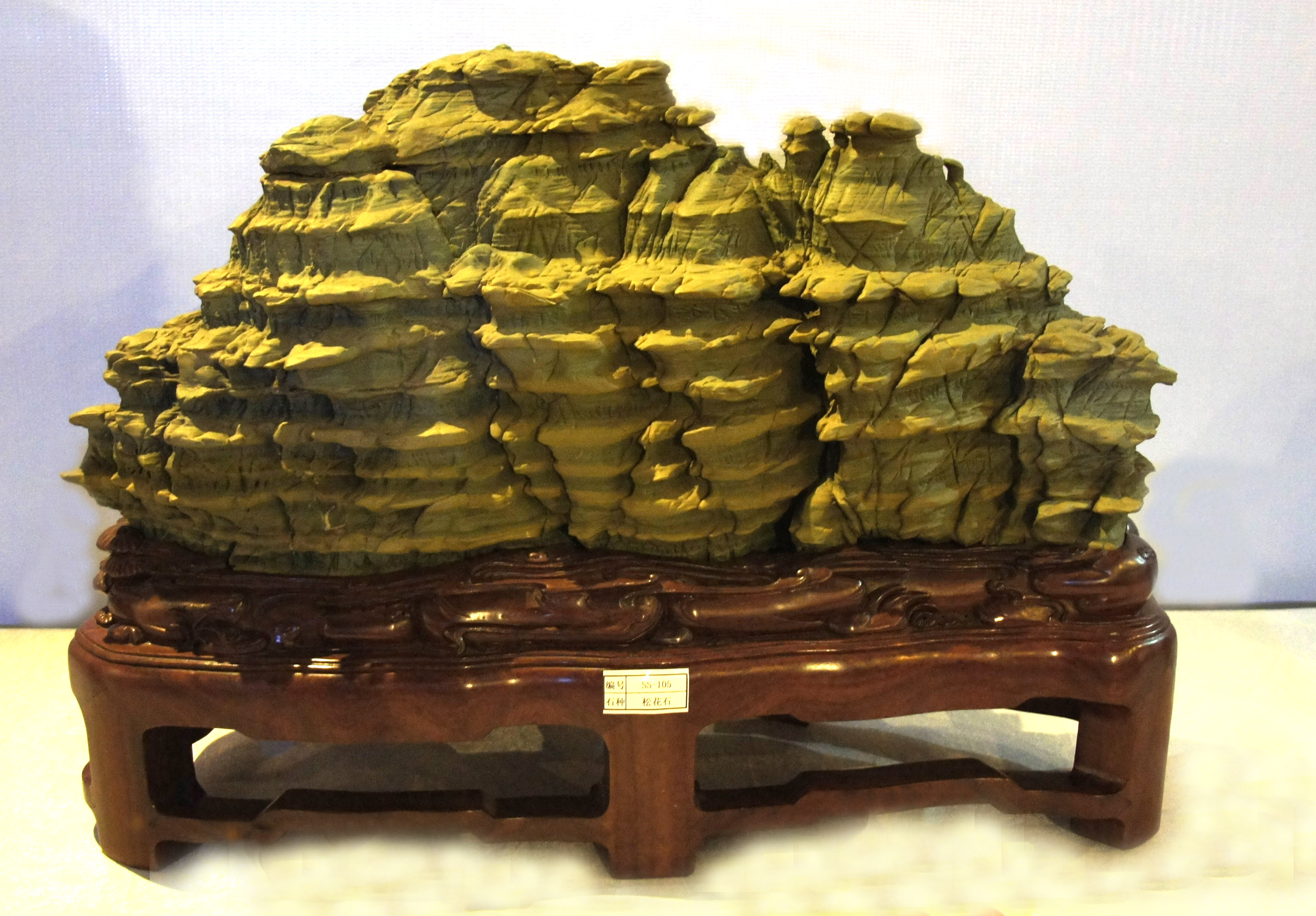
Wuling stone on a table-like wooden stand (Jiangan style), exhibited in Guangzhou in 2015
- Southern style: artistically shaped carvings with naturalistic motifs related to the thematic of the stone.
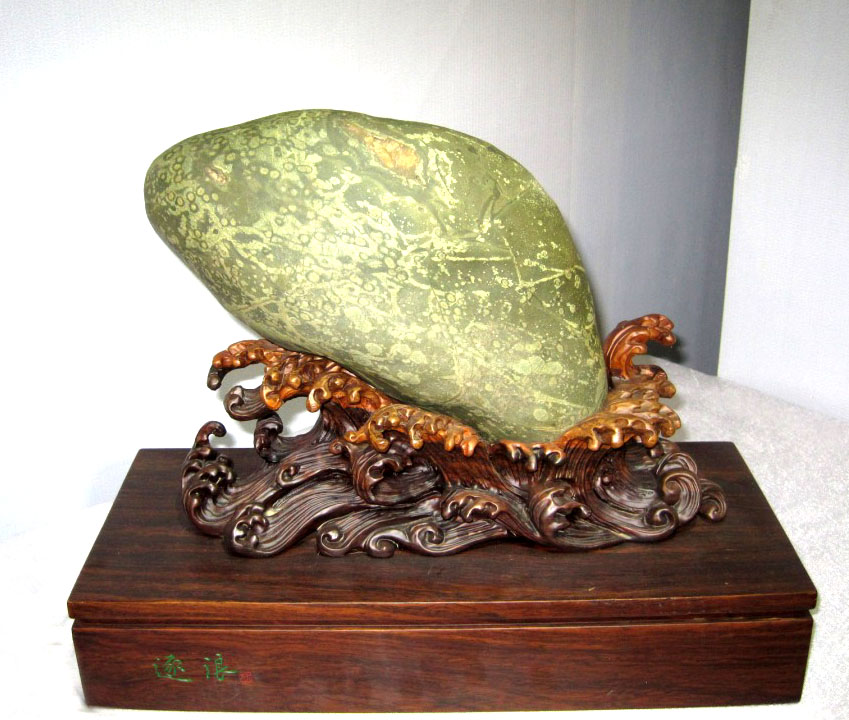
Green Lentil stone on a wooden stand in southern style with wave carving, exhibited in Guangzhou in 2015
